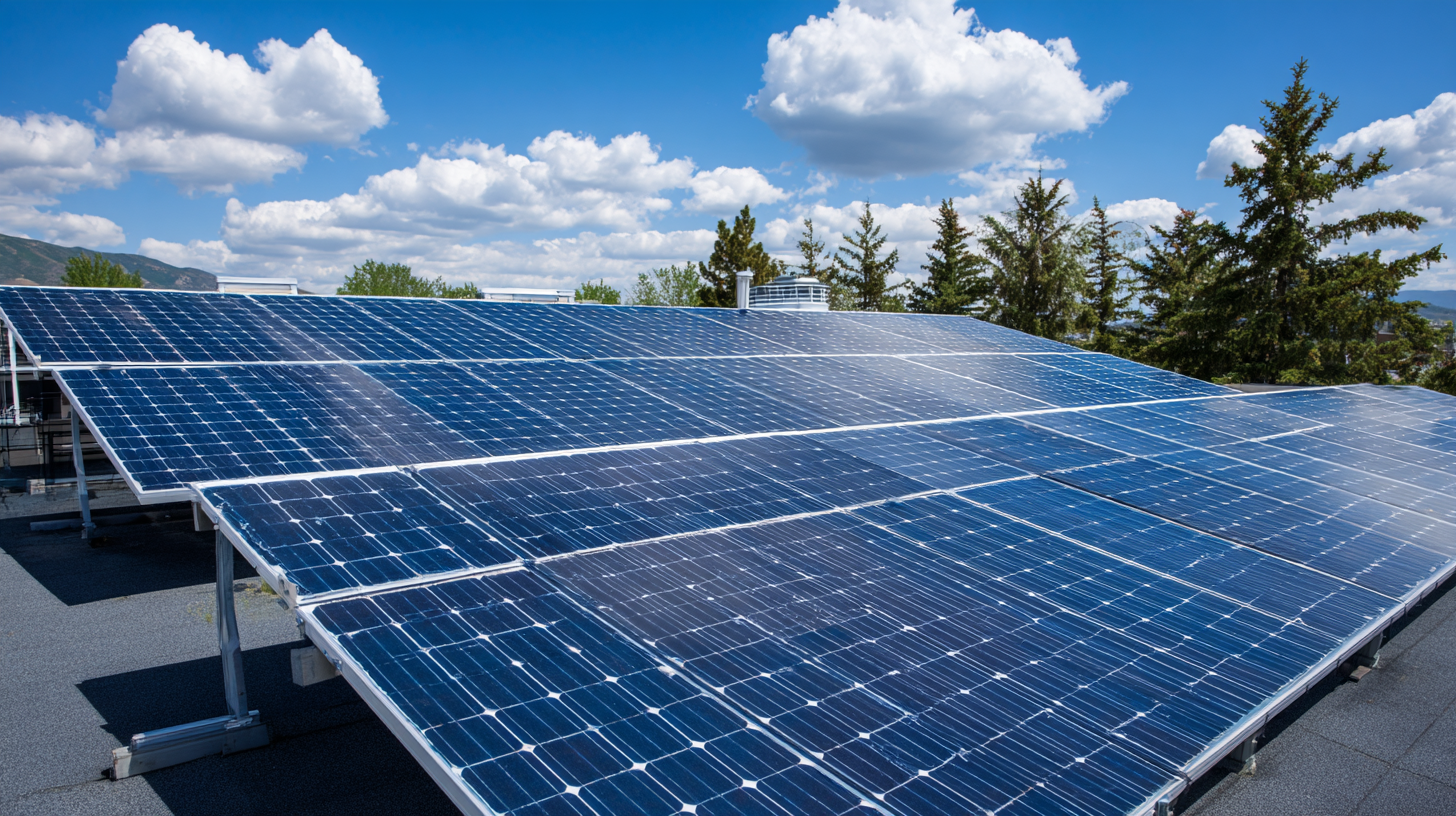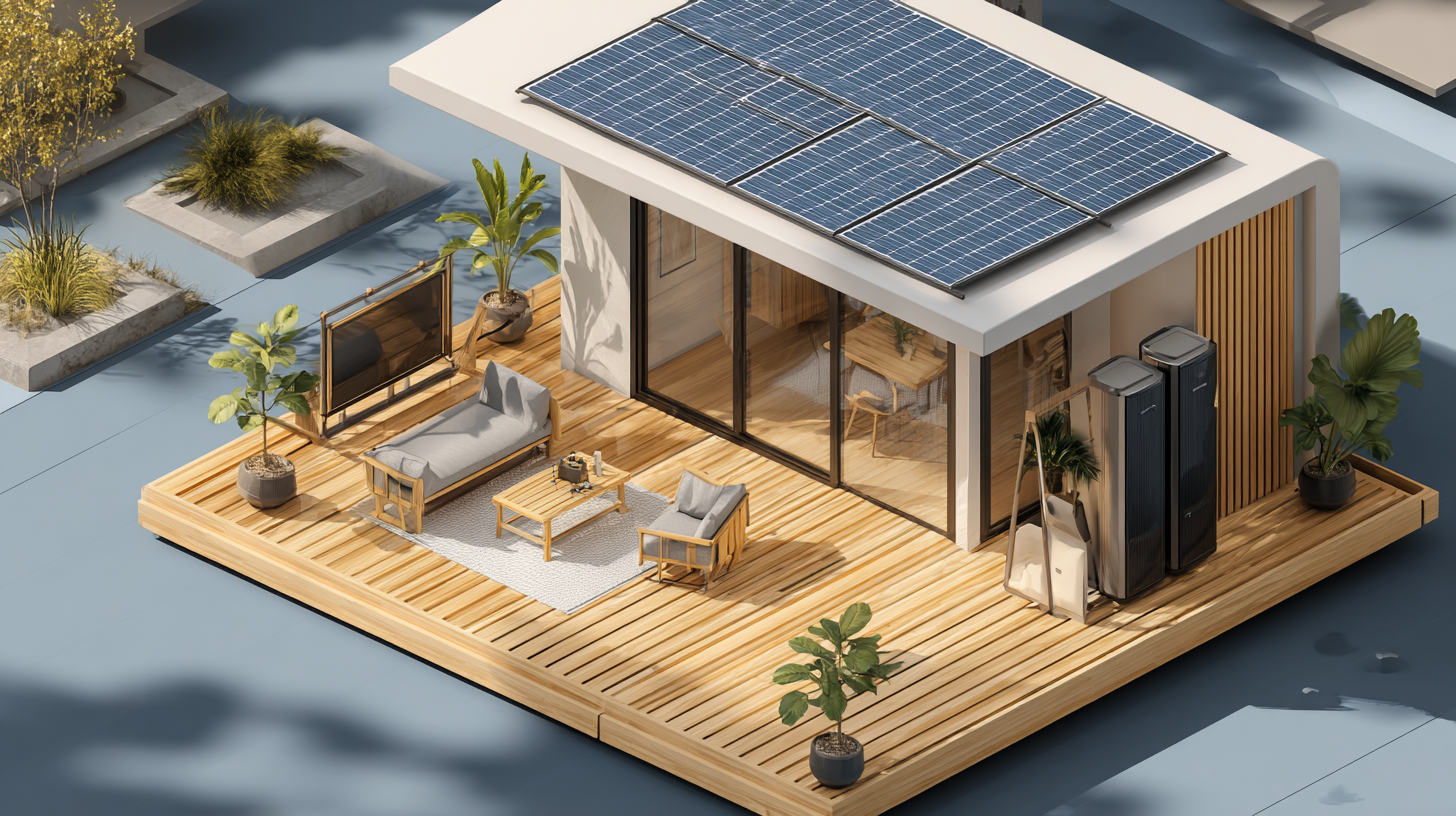As the demand for renewable energy continues to rise, understanding the intricacies involved in selecting the best solar panel system for your house has become paramount. According to a report by the International Renewable Energy Agency (IRENA), the global solar photovoltaic capacity reached 1,000 GW in 2020, demonstrating an exponential growth driven by advancements in technology and decreasing costs. China's pivotal role in this market cannot be overlooked; it is estimated that Chinese manufacturers produce over 70% of the world's solar panels, making "中国智造,全球热销,品质保证" more than just a slogan, but a reflection of their dominance in providing high-quality solar solutions. However, choosing the right solar panel system for your house involves navigating various factors including efficiency, durability, and local regulations, which can often be overwhelming for homeowners. This blog aims to shed light on these key issues, helping you to make informed decisions in harnessing the power of solar energy.

When selecting a solar panel system for your home, understanding the types of solar panels available is crucial for making an informed decision. The three main types of solar panels are monocrystalline, polycrystalline, and thin-film. Monocrystalline panels are known for their high efficiency, averaging around 15-20%, but tend to come at a higher price point. In contrast, polycrystalline panels, with efficiencies around 13-16%, are generally more affordable but occupy more space due to their lower efficiency per square foot. Thin-film panels, while the least efficient at 10-12%, provide flexibility and lower costs, making them an attractive option for certain applications.
Before choosing a type of panel, homeowners should consider their available space and budget. For those with limited roof space, investing in monocrystalline panels may yield the best long-term results despite the higher upfront cost. Additionally, understanding local solar incentives and potential savings on electricity bills can further influence your choice.
**Tips:** Evaluate your energy needs and conduct a cost-benefit analysis; it can play a significant role in determining which type fits your lifestyle best. Always consult industry reports such as those from the National Renewable Energy Laboratory (NREL), which provide valuable insights into the performance and trends of solar technology, ensuring you select the optimal system for your home.
| Type of Solar Panel | Pros | Cons | Cost Range (USD) |
|---|---|---|---|
| Monocrystalline | High efficiency, long lifespan, space-efficient | Higher cost, more susceptible to temperature variability | $1,000 - $3,000 per kW |
| Polycrystalline | Lower cost, less wastage in manufacturing | Lower efficiency, requires more space | $800 - $2,500 per kW |
| Thin-Film | Lightweight, flexible, better performance in high temperatures | Lower efficiency, shorter lifespan, larger area required | $500 - $1,500 per kW |
| Bifacial | Can generate power from both sides, higher overall efficiency | Higher initial cost, requires specific installation conditions | $1,200 - $3,500 per kW |
When selecting the best solar panel system for your house, evaluating efficiency ratings is critical. Understanding how these ratings work can significantly impact your system's overall performance. Currently, photovoltaic (PV) technology is central to the renewable energy transition, with advancements enhancing efficiency rates and lowering emissions. For instance, the latest studies indicate that high-efficiency panels can achieve conversion rates of over 22%, which is pivotal given the pressing global concerns of climate change and the urgent need for more sustainable energy resources.

Moreover, research underscores the importance of accurate solar energy modeling in optimizing generation planning. Data-driven approaches are now integrated into reliability assessments, addressing uncertainties in energy generation. As observed in Singapore's "Green Plan 2030", the systematic evaluation of solar capacity can lead to substantial carbon emission savings—potentially reaching up to 4,800 GWh by 2030. This kind of strategic planning is essential for homeowners looking to invest in solar systems, as it ensures not only alignment with global sustainability goals but also maximizes the performance and economic viability of residential solar solutions.
When considering the solar panel system for your home, a critical aspect often debated is the initial investment versus long-term savings. According to the Solar Energy Industries Association (SEIA), the average cost of a residential solar panel installation ranges from $15,000 to $25,000 before any incentives. While this upfront expenditure may seem daunting, it’s essential to look beyond the initial outlay to understand the potential financial benefits over time.
Investing in solar energy can yield substantial savings on electricity bills. The U.S. Department of Energy reports that homeowners can save an average of $20,000 to $30,000 over a 20-year span, depending on energy consumption and local electricity rates. Furthermore, with the increasing cost of traditional energy sources and the federal solar tax credit, which currently allows homeowners to claim 26% of their solar system costs, the return on investment can be significant. As energy prices are projected to rise, locking in a fixed energy cost through solar can be a strategic financial decision that pays dividends for years to come.
This chart illustrates the cost analysis of installing a solar panel system. The initial investment is set at $15,000, with expected annual savings of $1,200 and a payback period of approximately 12 years. Analyzing these figures helps homeowners understand the financial implications of switching to solar energy.
When it comes to selecting the best solar panel system for your home, understanding inverter options is crucial. The inverter plays a pivotal role in converting the direct current (DC) generated by your solar panels into alternating current (AC), which is used by the electrical appliances in your home. There are three main types of inverters: string inverters, microinverters, and power optimizers, each with its unique benefits and drawbacks.

String inverters are the most common choice for residential solar systems, connecting multiple panels in a series. They are cost-effective and easy to install, but their performance can be affected by shading on any single panel, leading to reduced energy output. Conversely, microinverters are installed on each panel individually, allowing each one to operate independently. This can maximize energy production in scenarios where some panels may experience shading or other issues. Power optimizers, on the other hand, combine the features of string inverters and microinverters; they optimize the performance of each panel while still being connected to a central inverter, offering a balanced solution for varying conditions.
Choosing the right inverter for your home should consider factors like installation costs, efficiency, and potential shading issues. By understanding these options, homeowners can make informed decisions that align with their energy needs and maximize the potential benefits of their solar panel system.
When selecting a solar panel system for your home, installation considerations play a crucial role in ensuring optimal performance. Factors such as roof orientation, tilt angle, and shading can significantly impact energy production. According to the National Renewable Energy Laboratory (NREL), a south-facing roof typically captures 20% more sunlight compared to a north-facing one. Therefore, homeowners should assess their roof’s orientation and inclination to maximize solar exposure.
Additionally, local climate and geographical location also influence solar panel efficiency. For instance, a report from the Solar Energy Industries Association (SEIA) highlights that regions with higher solar irradiance, like the Southwestern United States, can yield up to 25% more energy than areas with lower sunlight exposure. Moreover, seasonal variations in weather, such as prolonged cloud cover or heavy snowfall, can affect performance. Proper planning for these conditions, including regular maintenance and appropriate panel selection, is essential for maximizing the return on investment in solar technology.
As electricity costs continue rising, many small households in Maharashtra seek sustainabl...Read More
Uttar Pradesh is making significant progress in adopting renewable energy, particularly so...Read More
With the Indian government actively promoting renewable energy through subsidies and polic...Read More
Tired of watching your electricity bills climb month after month and strain your pockets? ...Read More
Switching to solar energy in Gujarat has never been more profitable! With plenty of sunlig...Read More
If you live in Madhya Pradesh and want to save money on power while living a greener lifes...Read More
If you’re a resident of Bangalore looking to save on your skyrocketing electricity b...Read More
If you live in Karnataka and have been looking for an environmentally friendly, cost-effec...Read More
Delhi is a city that thrives on its vibrant energy, and what better way to complement that...Read More
As electricity costs continue rising, many small households in Maharashtra seek ...Read More
Uttar Pradesh is making significant progress in adopting renewable energy, parti...Read More
With the Indian government actively promoting renewable energy through subsidies...Read More